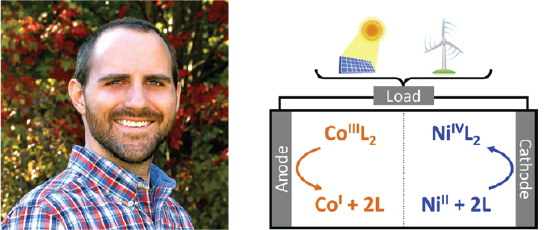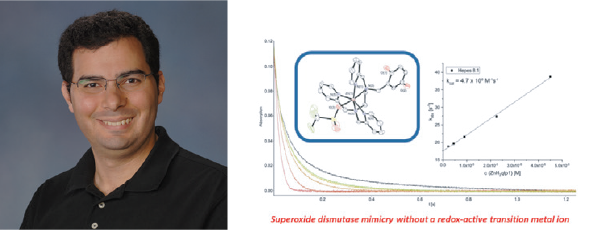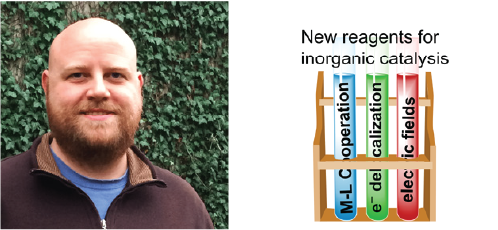Inorganic
Department of Chemistry and Biochemistry

Lloyd and Sandra Nix Associate Professor
farnum@auburn.edu
PhD Johns Hopkins University (2012)
Disciplines: inorganic, physical, energy, materials
The Farnum group is interested in the development of inorganic molecules and nanomaterials that address chemical challenges related to solar energy conversion and electrochemical energy storage. Our lab intersects the broad areas of inorganic and physical chemistry where we use a range of synthetic and characterization methods to produce new and exciting molecules/materials and probe their photo/electrochemical properties.

J. Milton Harris Professor and Undergraduate Program Officer (UPO)
crgoldsmith@auburn.edu
PhD Stanford University (2004)
Disciplines: inorganic, bioinorganic, catalysis, synthesis
My research group studies the interactions between coordination complexes and oxidants in order to develop catalysts and sensors capable of detecting reactive oxygen species in biological systems. We have successfully prepared catalysts for superoxide disproportionation, aldehyde deformylation, C-H activation, and olefin epoxidation. We have also prepared MRI contrast agents that react directly and selectively with H2O2 and can detect in vivo oxidative stress.

Assistant Professor
mzc0102@auburn.edu
PhD University of California – Irvine (2016)
Disciplines: inorganic, catalysis, synthesis, energy, materials
Inorganic catalysts have become invaluable tools for the synthesis of pharmaceutical, commodity, and industrial chemicals. Recent attention has begun to shift towards new ways of performing relevant reactions in more efficient and environmentally conscious ways. To meet this goal, the Hill lab is focused on developing new methods of controlling and enhancing the reactivity of Earth-abundant transition metal catalysts using long-range interactions such as external electric fields, metal-ligand cooperativity, and electronic delocalization. Areas of interest are in applying these methods to chemical synthesis, understanding fundamental aspects of chemical bonding, and future energy production.
